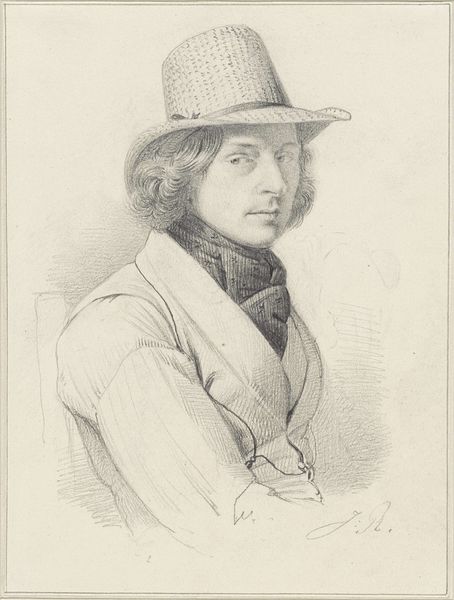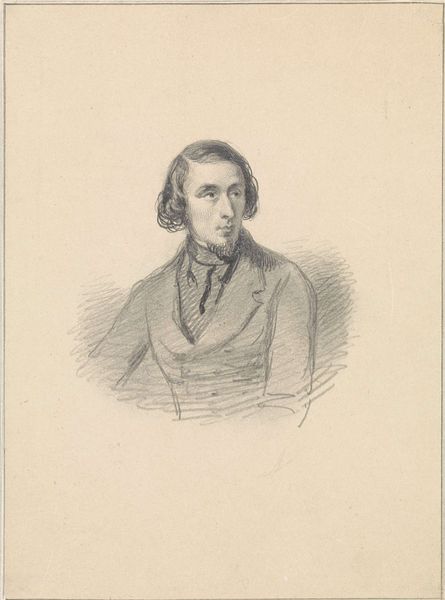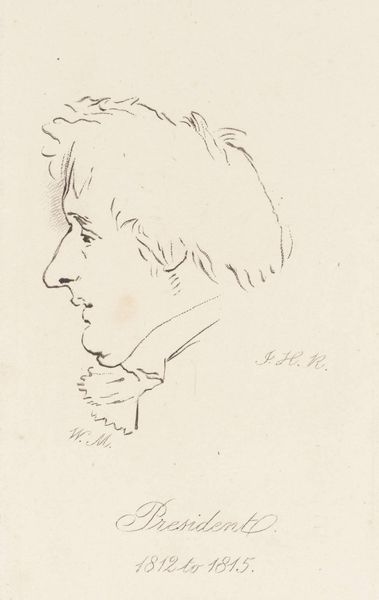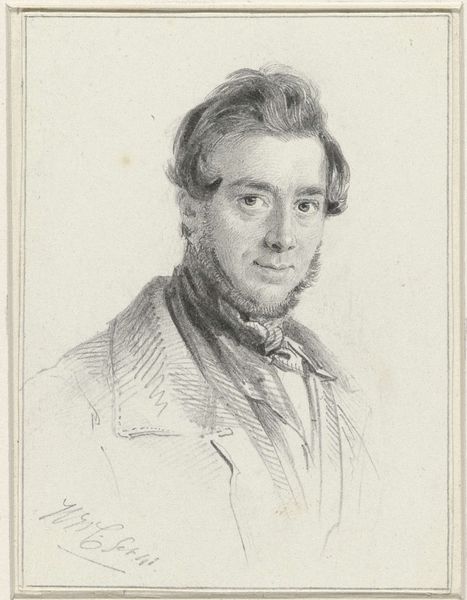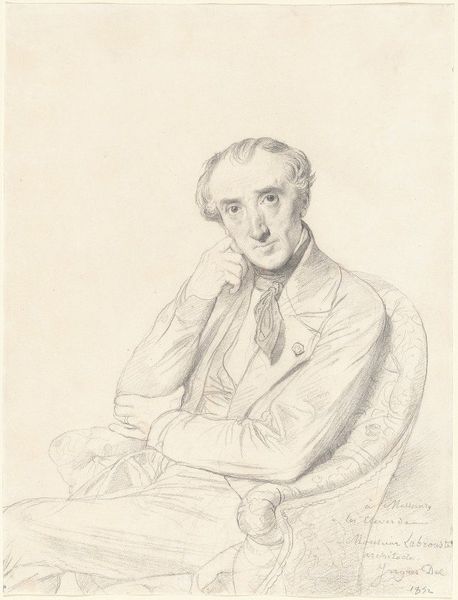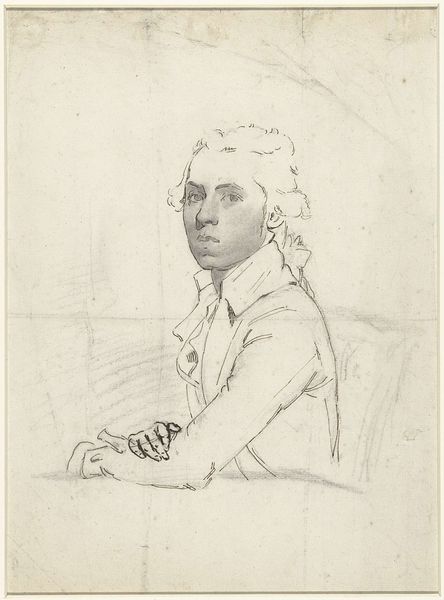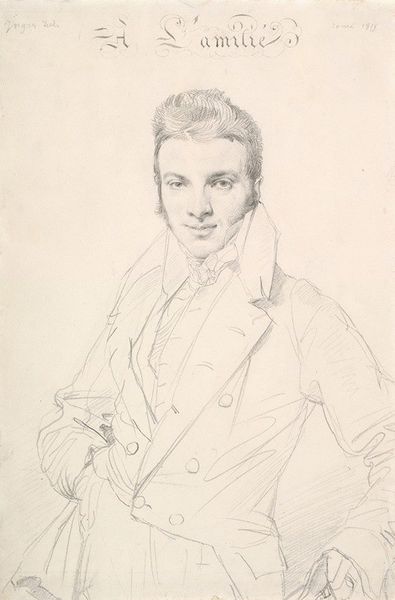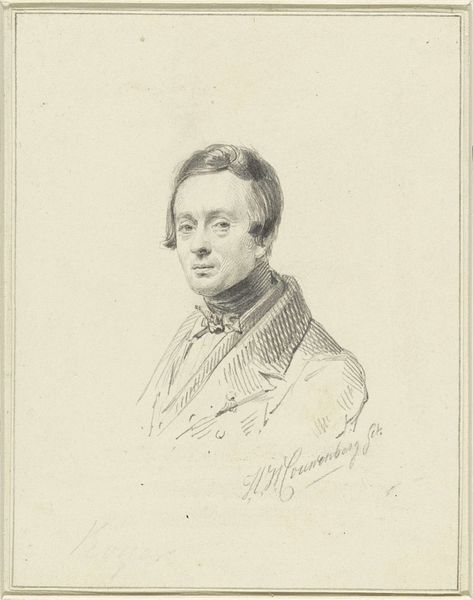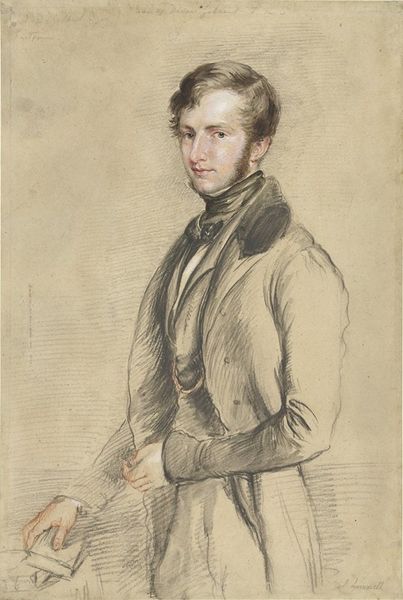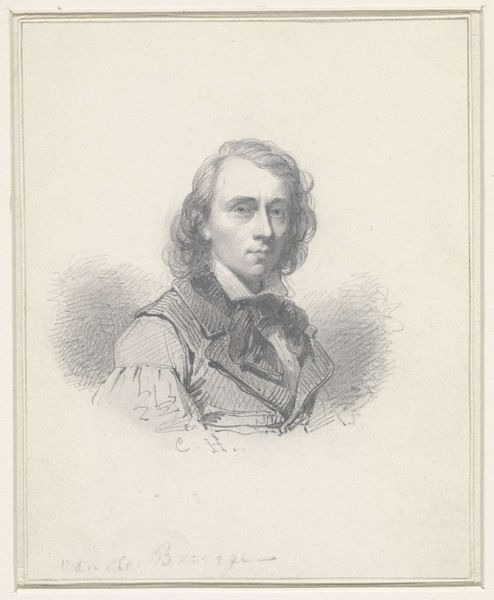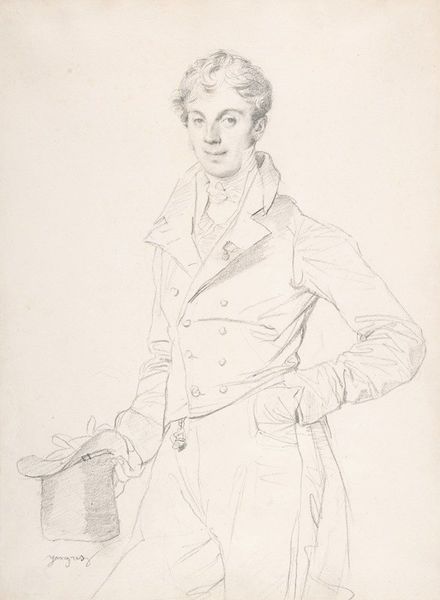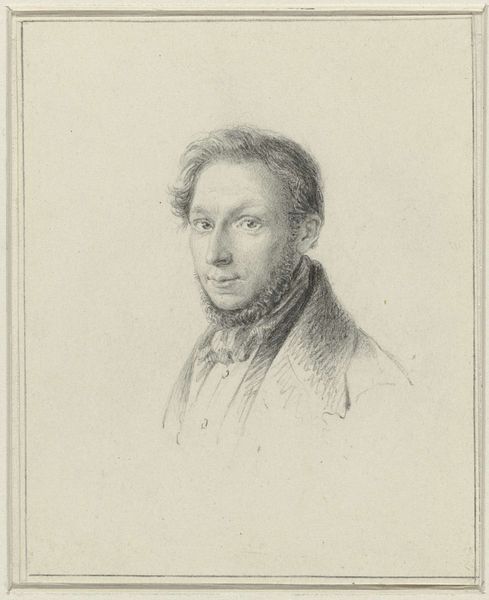
drawing, pencil
#
portrait
#
pencil drawn
#
drawing
#
neoclacissism
#
figuration
#
pencil drawing
#
pencil
#
line
#
portrait drawing
Copyright: Public Domain: Artvee
Curator: Here we have a work by Jean Auguste Dominique Ingres, a pencil drawing titled "Ursin-Jules Vatinelle," created in 1820. Editor: It feels surprisingly modern, doesn't it? Raw and unfinished, almost. There’s a delicate, haunted quality to the face... and the unfinished quality makes me feel like the subject could simply fade into nothingness. Curator: Indeed, the ephemeral nature of pencil contributes to that sense. It’s all line, isn't it? That emphasis reminds me of classical ideals but also emphasizes the human form. It evokes an almost sculptural presence on a flat surface. Ingres was deeply engaged with Neoclassicism, with its ideals of order, reason and reverence for antiquity, yet I agree, the sketch possesses an immediacy that belies its age. Editor: You see, the way Ingres has caught the light in Vatinelle’s eyes... the precise yet soft shading... he's really looking at us, inviting a sort of quiet dialogue. Almost as though the layers of representation have been pulled back and we are allowed a peep into something deeper. I wonder who Ursin-Jules Vatinelle was and what became of him... he emanates such calm gravity in this image. Curator: These portrait drawings by Ingres served, in a way, as preparatory studies for his larger paintings. So perhaps the haunting feeling comes from the sense of anticipation, of being in the liminal space between the conceptual idea and its fuller realization. Vatinelle may have commissioned a grander portrait later, or perhaps this sketch remains as the only surviving testimony to their acquaintance. It is worth keeping in mind the historical context of portraiture too: commissioning a portrait signaled status and legacy, but also functioned as a symbolic marker for inclusion in networks of power. Editor: It does highlight portraiture's significance, particularly at a time where representation could signal immortality, to some extent. What remains with me, however, is the subject’s rather enigmatic gaze; the open and almost melancholic attitude has an undeniable attraction, like looking into a mirror. Curator: Well said. For me, it’s this confluence of precision and feeling, this balancing act between historical form and raw emotion, that elevates Ingres’ work. It certainly encourages one to dwell on the nuances of human existence, doesn't it?
Comments
No comments
Be the first to comment and join the conversation on the ultimate creative platform.
